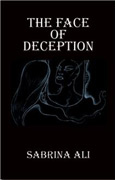
 |
So I do what I must to set my self free."
Sarah O'Connor is a seventeen year old senior in a private Catholic high school. The daughter of an easy-going Irish father and a stern and hypercritical East Indian mother, Sarah is a perfect embodiment of second generation immigrants to Canada's attendant cultural clashes that result from wanting to be more North American than their parents are ready for. In this case, it is Sarah's mother, and the big taboo is boys. She is forbidden to date or even receive phone calls without her mother listening in. Carping comments about her body weight and eating habits combine with a generally harsh and unloving treatment that convinces Sarah that her self-worth is little indeed. Nevertheless, she and her best friend, Amrit, another child of East Indian immigrants, pool their resources and manage to date and spend time with boyfriends on the sly. Eventually the dating leads to more, and both girl's sexual activity is discovered by their respective families. Beaten up physically and thrown out of their homes, Sarah and Amrit manage to hook up with their boyfriends and land a sweet high-rise apartment in downtown Vancouver through generosity from a cousin of Amrit's boyfriend who has lots of money from drug-dealing. Sarah soon learns that his generosity is not as pure as it seems, and his sexual exploitation of her is relentless.
Since almost all of the characters in the novel are seventeen or eighteen, emotions and hormones run riot throughout. Sarah must learn to overcome the self-loathing instilled in her by her own mother, but this is a lesson hard-learned. Told from the first-person viewpoint, we see the turmoil and pain that she endures on this journey of self-discovery. Crushes, loves, and sexual embroilments lead to all kinds of plot-points that are too mature for teenagers, the resultant damage drawn with dayglow intensity. The theme is perhaps the difficulties of second generation immigrants, but a more compelling sub-theme is learning how to love and respect one's self. The author's skill in eliciting teenage angst is paired with a wicked sense of plot twist that keeps the pages turning. Secrecy in families is also explored, and most of the characters wind up being understandable if not completely admirable in the end. A window into child abuse, the novel also serves as a reminder that modern society has not eradicated sadistic and controlling parents who feel they own their children. The story ends on a somewhat somber note, and one feels that the pain level perhaps outweighs the redemption level, particularly in a story so filled with love and forgiveness. Ultimately, then, this is a tragedy and not a romance, though it has definite romantic elements.